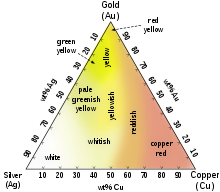I hope you read that article, it's imperative that you do. I did give a chapter in Psalms specifically verse six:
Gold is the most malleable and ductile of all metals; a single gram can be beaten into a sheet of 1 square meter, or an ounce into 300 square feet. Gold leaf can be beaten thin enough to become translucent. The transmitted light appears greenish blue, because gold strongly reflects yellow and red. Such semi-transparent sheets also strongly reflect infrared light, making them useful as infrared (radiant heat) shields in visors of heat-resistant suits, and in sun-visors for spacesuits .
Gold readily creates alloys with many other metals. These alloys can be produced to modify the hardness and other metallurgical properties, to control melting point or to create exotic colors (see below).Gold is a good conductor of heat and electricity and reflects infrared radiation strongly. Chemically, it is unaffected by air , moisture and most corrosive reagents, and is therefore well suited for use in coins and jewelry and as a protective coating on other, more reactive, metals. However, it is not chemically inert.
Common oxidation states of gold include +1 (gold(I) or aurous compounds) and +3 (gold(III) or auric compounds). Gold ions in solution are readily reduced and precipitated out as gold metal by adding any other metal as the reducing agent. The added metal is oxidized and dissolves allowing the gold to be displaced from solution and be recovered as a solid precipitate.
High quality pure metallic gold is tasteless and scentless, in keeping with its resistance to corrosion (it is metal ions which confer taste to metals).
In addition, gold is very dense, a cubic meter weighing 19,300 kg . By comparison, the density of lead is 11,340 kg/m 3 , and that of the densest element, osmium, is 22,610 kg/m 3 .
Color
 Different colors of Ag-Au-Cu alloys
Different colors of Ag-Au-Cu alloys Whereas most other pure metals are gray or silvery white, gold is yellow. This color is determined by the density of loosely bound (valence) electrons; those electrons oscillate as a collective "plasma" medium described in terms of a quasiparticle called plasmon. The frequency of these oscillations lies in the ultraviolet range for most metals, but it falls into the visible range for gold due to subtle relativistic effects that affect the orbitals around gold atoms. Similar effects impart a golden hue to metallic caesium (see relativistic quantum chemistry).
Common colored gold alloys such as rose gold can be created by the addition of various amounts of copper and silver, as indicated in the triangular diagram to the left. Alloys containing palladium or nickel are also important in commercial jewelry as these produce white gold alloys. Less commonly, addition of manganese, aluminium, iron, indium and ot
Consider the words of Solomon's whos words are revered even today (not a whole lot by me though I personally don't care for his philosophy as a whole, but he is definitely noteworthy such as Paul's Epistles):
Ecclesiastes 3 - 18 I also said to myself, “As for humans, God tests them so that they may see that they are like the animals. 19 Surely the fate of human beings is like that of the animals; the same fate awaits them both: As one dies, so dies the other. All have the same breath; humans have no advantage over animals. Everything is meaningless. 20 All go to the same place; all come from dust, and to dust all return. 21 Who knows if the human spirit rises upward and if the spirit of the animal goes down into the earth?”
22 So I saw that there is nothing better for a person than to enjoy their work, because that is their lot. For who can bring them to see what will happen after them?
The fact that this kind of writing was a Jewish religious tenent is peculiar to me. It seems that Solomon and Dawkins could be friends.
 Different colors of Ag-Au-Cu alloys
Different colors of Ag-Au-Cu alloys